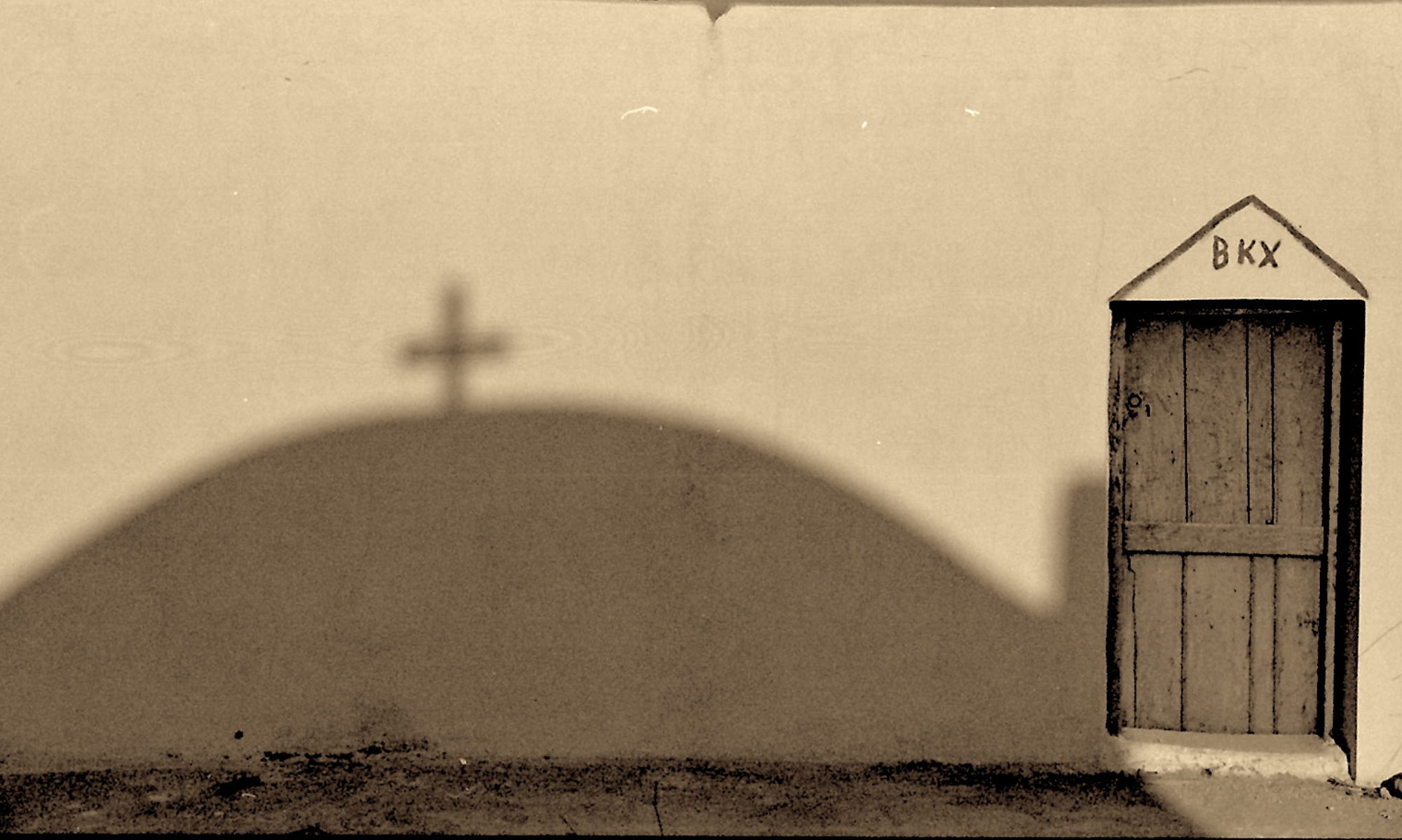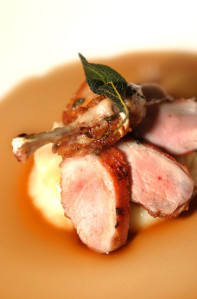Published: CT magazine, August 2004
Imagine sitting down to a refreshing cocktail of orange juice and grenadine with a ball of carrot sorbet. Then comes a starter of five ‘cracklings’ of fish skin, thin threads of pizza dough, and pine nuts with caramelised beetroot. The first course follows – this time, a spoon of apple jelly drizzled with a highly concentrated balsamic vinegar. The second is a sea-urchin ravioli served with a sea-urchin jelly. And so it goes on for perhaps another 20 intriguing courses.
This isn’t a food writer’s bad dream. It’s an account of two Australian food reviewers’ experience of a meal at one of the world’s hottest restaurant – El Bulli, in Spain. Little wonder then that El Bulli’s chef, Feran Adria, has been described as the Salvador Dali of the kitchen. His is cutting edge cuisine, and highlights the capacity of the so-called degustation or tasting menu to push culinary boundaries to their limits.
The degustation menu is now gaining a foothold in the Canberra food scene. Food historians point to the emergence of medieval dinners of up to 20 courses as the origin of the contemporary ‘deg’, although these were unlikely to be meals of great sophistication or balance. It took the great French chefs of the late 19th and early 20th centuries to polish the concept. George-Auguste Escoffier (1846-1935), in particular, impressed European royalty with intricate dinners of up to 15 courses. These were meals were somewhat larger than their contemporary counterparts. In particular, historical accounts indicate that Escoffier would turn out a meal that involved hefty portions of quail, chicken or lamb for each guest.
Adolphe Duglere, a student of that other famous French chef Antonin Careme (1783-1833), cooked his way into the history books in 1867 with the expensive and extravagant ‘Three Emperors’ dinner. Prepared for Tsar Alexander II, the future Alexander III, Wilhelm I of Prussia and Bismark, it entailed 15 courses of imaginative dishes like a champagne sorbet and canapes of ortolan – a small migratory bird that is now protected in France. It was accompanied by some of the country’s finest wines – Champagne Roederer, Chateau Latour, Chateau Lafite, Chateau d’Yquem and Chateau Margaux.
Melbourne’s Shannon Bennett, head chef at Vue de Monde, re-created the dinner in 2003 for a select list of of guests with deep pockets and a spare seven hours. The dinner involved six months of planning, with select ingredients (but no ortolan) flown in to satisfy Bennett’s interpretation. A top French pastry chef was also flown out to manage the desserts and petit four.
While the degustation menu has long been the centrepiece of many a fine French restaurant, it has only taken off in Australia in recent years. Probably the greatest exponent of the genre in Australia is Tetsuya Wakuda of Tetsuya’s in Sydney. He threw away the a la carte menu some time ago to concentrate on his famous 10 course tasting menu, which forges the influences of great French and Japanese cooking. Imagine a carpaccio of beetroot with toni buri; gazpacho with spiced tomato sorbet; a grilled potato noodle with wakame and lemon; a ravioli of lobster with scallop and tarragon mousse; a mandarin sorbet with black pepper; or a hazelnut soup with chocolate and hazelnut sorbet.
Tetsuya’s influence is also felt in Canberra. Head Chef at Dijon, John Blackwell, had just about had enough of the food industry in the late 1990s. In early 2000, he took a gamble on the degustation idea with the opening of Dijon in Ainslie. “We were definitely inspired by Tetsuya and began offering 5-7 course tasting menus upon opening. I wanted to change change perceptions in Canberra about what constituted a great dining experience. I wanted to promote the idea of a much greater experience – involving consecutive dishes that were well balanced with the wines. I wanted people to feel like they had been on a journey through different textures and flavours,” he said.
The Dijon tasting menu reflects a marriage of Japanese and European influences in its emphasis on some raw ingredients such as sashimi or natural oysters, and the use of lighter sauces. Some of the dishes on the current tasting current menu include: a tempura yamba prawn with chilli jam, and a ginger and lime paste; slow cooked pork belly with sauteed mushrooms, scallops, chilli oil and mirin; and crisp quail breasts and quail ravioli with celeriac puree, proscuitto, sage and quail jus.
Local chefs see advantages for both restaurateurs and patrons in attempting the degustation menu. The first is in expanding tastes and knowledge of food. “The degustation menu allows people to try things they might not otherwise attempt. Sometimes guests don’t realise what things are on the menu. It is a good vehicle for expanding their tastes”, Blackwell said.
Another attraction is the opportunity for chefs and restaurateurs to explore new ideas in the kitchen. Degustation courses can emphasise one or two particular ingredients – sometimes rich and intensely flavoured ones like truffles or foie gras. “It allows us to experiment. One day we were playing around in the Dijon kitchen and developed a great scallop and foie gras dish. At first people questioned it, but it proved to be very popular and a great combination of flavours,” Blackwell said.
Such ambition, however, brings great challenges. Chefs must first ensure the appropriate balance of dishes and flavours, and there are underlying principles which must be kept in mind. First, each dish needs to lead into another. Raw and light ingredients come first, following heavier and richer dishes. Spicier foods are also usually served later in the proceedings, so as not to disrupt flavours in the subsequent dishes. Similarly accompanying wines must evolve from younger white styles through to full bodied reds, and perhaps a muscat or bortrytis affected wine. Dish sizes need to be carefully measured to ensure that diners never become too full.
As a degustation menu can be labour intensive and time consuming to prepare, it imposes new disciplines on the kitchen and restaurant staff. There are also challenges in meeting the needs of all patrons when some may opt for a la carte, and others the tasting menu. “Your kitchen has to work well with floor staff. The sommelier and chef have to work very well together. Sometimes it doesn’t always come off, but it is a more interesting challenge,” said Blackwell.
Darren Vaughan of Water’s Edge is also a proponent of the tasting menu, but is aware of the challenges it offers. “The capacity to deliver a degustation menu can depend on the type of food. Tetsuya’s food is well suited to the tasting menu because it usually consists of smaller components which can be varied and changed. It is harder for chefs who prepare traditional dishes of a meat, protein and starch to adapt them to smaller tasting portions,” said Vaughan. Blackwell agrees that a tasting menu usually must draw on the ingredients available on the a la carte menu. “It isn’t economical to offer a la carte and something completely different as a degustation menu. If you don’t sell a deg menu for several nights, it is waste of expensive ingredients,” he said.
Dijon’s gamble with the degustation menu certainly appears to have paid off, with its increasing popularity among Canberra diners. According to Darren Vaughan, transit dining traffic from the big cities has helped establish the deg menu in the national capital. “An important factor in explaining their rise in Canberra, could be traffic between Sydney and Melbourne. People eating in those cities often pass through Canberra for business, and have imported their tastes,” he said. That said the uptake of the degustation menu can be fairly variable in Canberra. “I can’t explain why we might sell several on a Tuesday but none on a Friday,” said Vaughan.
Other Canberra restaurants are also responding to the call for the degustation meals. James Mussillion offers a couple of excellent six course versions ($80 per person or $110 per person including wine) at both Aubergine and Courgette. Even The Chairman and Yip has joined the degustation club with a five course option at $125.00 per person (including wine) – the dishes differing from those on the a la carte menu and featuring a journey through beautiful ingredients such as Balmain bug tail, patagonian toothfish, abalone, and roast duck. A vanilla bean panna cotta rounds out the dishes.
The further development of the degustation trend in the national capital will be interesting to follow. Blackwell and others, for now, don’t believe the market is sufficiently large to enable restaurants to offer a deg menu exclusively. “If we were in a city of several million people, it could be done. I’d like to offer the degustation exclusively because my idea of a good night is to be cooked for and not have to make selections,” he said.
As for the idea of Canberrans subjecting themselves to a ‘blind’ tasting menu (where each course arrives without any prior warning as to its contents), Blackwell said he would like to attempt it, but is not sure the local dining population is ready. “Dining is very much about people’s perceptions of what they are eating. So, it might be hard for some people to surrender their control over their selections”. But as Blackwell notes, if a chef is worth their salt, a diner should be able to put wine and food selections into the chef’s hands with confidence. It all comes down to trust.

